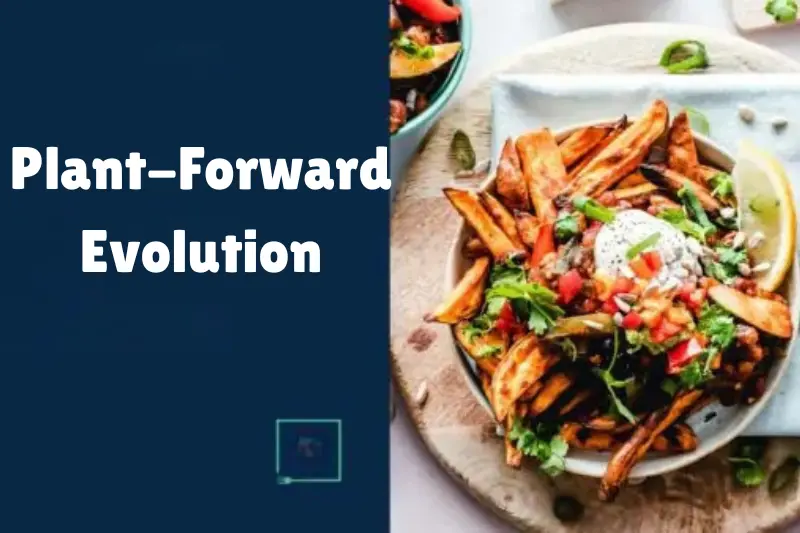The world of food is changing faster than ever, and 2026 is shaping up to be a year full of exciting and innovative trends. Whether you love experimenting in the kitchen, running a restaurant, or simply enjoy trying new dishes, knowing the types of food trends in 2026 will help you stay ahead of the curve. From plant-forward meals to AI-driven personalized nutrition, the way we eat is becoming smarter, healthier, and more sustainable.
For example, imagine walking into a café where your smoothie is tailored to your energy levels, your burger is made from lab-grown meat, and your snack is packed with ingredients that boost your mood—all designed with both your health and the planet in mind. These trends are transforming the dining experience, making every meal not just tasty but purposeful.
1. Plant-Forward Evolution

While plant-based diets have been growing steadily, the types of food trends in 2026 indicate a significant shift from simply mimicking meat to embracing plant-forward ingredients as the star of the plate.
Instead of creating plant-based burgers or chicken substitutes that imitate animal protein, chefs and food brands are focusing on the natural flavors, textures, and nutritional benefits of vegetables, legumes, whole grains, and seeds. Dishes are designed to highlight the richness of plants, such as hearty grain bowls, roasted vegetable platters, or protein-packed lentil stews. This approach not only supports sustainable eating but also encourages a deeper appreciation of the versatility of plant ingredients.
Example trend: Restaurants may offer “vegetable tasting menus” where each course centers around a different plant-based protein or vegetable, making plants the hero rather than a sidekick.
2. Alternative Proteins: Fermentation & Cell-Cultured Meat
Another key category in the types of food trends in 2026 is alternative proteins. Precision fermentation and cell-cultured (lab-grown) meat are set to revolutionize the protein market.
Precision fermentation uses microbes to produce proteins traditionally derived from animals, such as cheese or eggs, while cell-cultured meat grows real animal cells in controlled environments. These technologies make protein more sustainable, reduce environmental impact, and avoid ethical concerns associated with conventional meat production.
Impact on everyday eating: Soon, you could enjoy a juicy burger or creamy mozzarella that’s lab-produced, guilt-free, and environmentally friendly—all without sacrificing taste or texture.
3. Functional Foods & Adaptogens
Consumers are increasingly looking for foods that do more than satisfy hunger—they want foods that enhance overall wellness. Functional foods and beverages infused with adaptogens, probiotics, superfoods, and nootropics are gaining momentum in the types of food trends in 2026.
These foods are crafted to support immunity, mental clarity, stress reduction, gut health, and overall vitality. Popular ingredients include ashwagandha for stress relief, reishi mushrooms for immunity, and probiotics for gut balance. Beverages like mushroom elixirs, adaptogenic teas, and fortified smoothies are becoming daily staples for health-conscious consumers.
Why it matters: People are shifting from calorie-focused eating to nutrient-dense, functional diets that enhance their daily performance and long-term health.
You may also like to read this:
Types of Hidden Ingredients In Processed Foods You Must Know
Why Calories on Labels Can Be Confusing Explained
Best Apps To Check Nutrition Facts For Healthy Eating
10 Top Nutrition Facts People Often Ignore To Eat Smarter
Top Insights on What Are the Latest Food Industry Trends
4. Personalized Nutrition
Perhaps one of the most exciting and futuristic types of food trends in 2026 is personalized nutrition. Using AI, biomarker testing, and data-driven insights, consumers can now tailor their diets to match their specific health goals.
Personalized nutrition takes into account individual differences in genetics, microbiome, activity levels, and lifestyle factors to create diet plans optimized for energy, weight management, mental wellness, or performance. Imagine receiving a weekly meal kit customized for your body’s needs or using an app that suggests snacks based on real-time health data.
Real-world example: Health platforms may provide personalized supplement recommendations or recipes based on your blood sugar, cholesterol, or vitamin levels.
5. Hyperlocal & Sustainable Sourcing
Sustainability is no longer optional—it’s a consumer expectation. Hyperlocal sourcing, which emphasizes sourcing ingredients from nearby farms and producers, is becoming a cornerstone of the types of food trends in 2026.
Additionally, upcycled products—foods made from ingredients that would otherwise go to waste—are gaining traction. This reduces food waste while creating innovative products like flour from discarded fruit pulp or beverages from spent grains.
Consumer benefit: These practices support local communities, reduce carbon footprints, and introduce fresh, seasonal flavors to the plate.
6. Global Fusion Flavors
In 2026, culinary creativity will reach new heights with global fusion flavors. Trendsetters are blending sweet, spicy, sour, and umami in ways that surprise and delight the palate. One rising trend is “Swicy,” a blend of sweet and spicy flavors that balances heat with sugary notes.
Other trends include cross-cultural combinations such as Korean-Mexican tacos, Japanese-Italian pasta, or Indian-inspired desserts with Latin American spices. These innovations in the types of food trends in 2026 reflect the growing desire for bold, adventurous, and Instagram-worthy dining experiences.
7. Convenience with Zero-Waste
Busy lifestyles require convenience, but in 2026, convenience won’t come at the expense of sustainability. Zero-waste practices, eco-friendly packaging, and reusable containers are becoming mainstream.
Meal kits, ready-to-eat meals, and portable snacks are being designed not only for speed but also to reduce environmental impact. Companies are finding innovative ways to make convenience eco-conscious—from compostable packaging to foods made from surplus ingredients.
Trend insight: Consumers want it all: meals that are quick, tasty, and planet-friendly.
8. Mood-Centric Foods
One of the more unique and fascinating types of food trends in 2026 is mood-centric foods. More people are recognizing the link between diet and mental well-being, and food brands are responding with products designed to support emotional health.
Expect snacks, beverages, and meals that promote happiness, relaxation, or mental focus. Ingredients like dark chocolate for serotonin support, omega-3-rich seeds for brain health, or herbal infusions for calming effects are likely to appear in everyday products.
Why it matters: Eating for mood goes beyond nutrition—it’s about creating holistic wellness through food.
9. Smart Kitchen Technology

As part of the types of food trends in 2026, smart kitchen technology is transforming how we cook, store, and prepare meals at home. From AI-powered ovens that adjust cooking time and temperature automatically to smart refrigerators that track inventory and suggest recipes based on what’s inside, technology is making healthy and sustainable eating easier than ever.
Example: Imagine a fridge that alerts you when vegetables are about to spoil and offers recipes to use them up, reducing food waste while keeping meals fresh and flavorful.
10. Functional Beverages Beyond Coffee
While coffee and tea have long been staples, 2026 will see a surge in functional beverages designed for specific health benefits. These drinks include mood-enhancing elixirs, gut-friendly kombuchas, energy-boosting adaptogen tonics, and hydration-focused beverages infused with electrolytes and superfoods.
Trend insight: Consumers are seeking beverages that not only quench thirst but also actively improve well-being, making drinks a key component of daily nutrition rather than just refreshment.
11. Ethical Indulgence
One of the subtler yet growing types of food trends in 2026 is ethical indulgence. People want treats that taste indulgent but are produced sustainably and ethically. This includes chocolates, ice creams, pastries, and snacks made from responsibly sourced ingredients with minimal environmental impact.
Consumer benefit: Ethical indulgence allows you to enjoy sweet or savory delights guilt-free, knowing that your choices support fair labor, eco-friendly farming, and reduced waste.
12. Immersive Dining Experiences
Food is no longer just about taste—it’s about the entire experience. Experiential dining is becoming a prominent trend in 2026, combining food with storytelling, cultural immersion, and interactive elements.
Examples:
- Pop-up restaurants featuring seasonal, local ingredients in unique settings.
- Multi-sensory dining experiences where lights, music, and textures complement the meal.
- Cooking classes integrated with tasting experiences that educate diners on sustainability and nutrition.
These experiences align with the broader types of food trends in 2026, emphasizing creativity, engagement, and connection to the source of food.
13. Regenerative Agriculture and Farm-to-Table
Sustainability is evolving beyond eco-conscious sourcing. Regenerative agriculture, which focuses on soil health, biodiversity, and carbon sequestration, is becoming central to the food industry. Restaurants and brands that embrace farm-to-table practices are highlighting ingredients grown in harmony with nature.
Impact: Consumers are increasingly choosing meals that not only taste fresh but also actively contribute to a healthier planet. Ingredients grown using regenerative methods are richer in nutrients and flavor, adding value to every bite.
14. Culinary Nostalgia with a Modern Twist
Another emerging trend is blending nostalgia with innovation. In 2026, chefs are revisiting childhood favorites and classic comfort foods, giving them a modern, healthier, or globally inspired twist.
Examples:
- Plant-based versions of classic mac and cheese or fried chicken.
- Traditional desserts reimagined with superfoods or functional ingredients.
- International comfort foods fused with local flavors to create unique culinary experiences.
This trend appeals to both the desire for familiarity and the curiosity for new, health-conscious experiences.
Final Thoughts
The types of food trends in 2026 reveal a future where food is more than sustenance—it’s a source of wellness, creativity, and connection. From plant-forward meals and lab-grown proteins to personalized nutrition, mood-boosting foods, immersive dining, and sustainable sourcing, what we eat is evolving in exciting ways.
By embracing these trends, you can make informed choices that align with your lifestyle, health goals, and environmental values. The culinary future isn’t just about flavor—it’s about creating meaningful, mindful, and joyful experiences with every bite.
FAQs
1. What are the main types of food trends in 2026?
The main types of food trends in 2026 include plant-forward meals, alternative proteins like lab-grown meat, functional foods with adaptogens, personalized nutrition using AI, hyperlocal and sustainable sourcing, global fusion flavors, zero-waste convenience foods, and mood-centric foods.
2. What is plant-forward eating?
Plant-forward eating focuses on making vegetables, legumes, grains, and seeds the star of a meal rather than just mimicking meat. It emphasizes natural flavors, textures, and nutritional benefits, supporting both health and sustainability.
3. How are alternative proteins changing the food industry?
Alternative proteins, such as cell-cultured meat and precision fermentation, provide sustainable, ethical, and environmentally friendly protein sources. They allow people to enjoy traditional protein foods without harming animals or the planet.
4. What are functional foods and adaptogens?
Functional foods are designed to provide health benefits beyond basic nutrition. Adaptogens are natural ingredients that help the body manage stress, improve immunity, and support mental clarity. Examples include ashwagandha, mushrooms, and probiotics.
5. How is personalized nutrition used in 2026?
Personalized nutrition uses AI, biomarker testing, and individual health data to tailor diets for specific goals like energy, mental wellness, or weight management. Meal plans, supplements, and snacks can be customized based on your unique needs.




